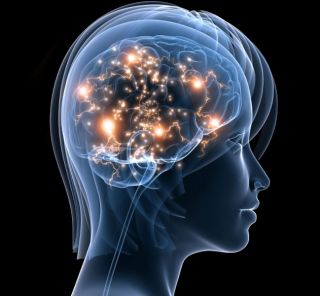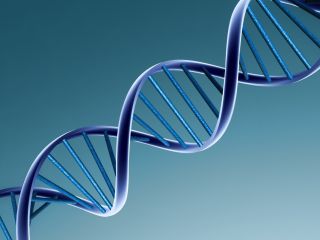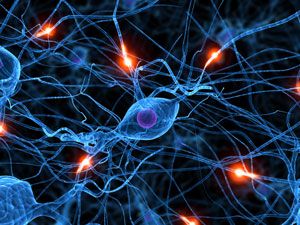Autism
Autism Genes Can Disrupt Connections Between Brain Regions
Neuroscientists have identified autism genes that alter early brain development.
Posted November 22, 2013

Two groundbreaking studies on autism were published yesterday in the journal Cell. The first study was from a team of neuroscientists at University of California Los Angeles (UCLA), the other study was from researchers at University of California San Francisco (UCSF). Together these studies mark a turning point in autism spectrum disorders (ASDs) research.
The researchers at UCLA are the first to map groups of autism-risk genes by function, and to identify where and when these genes normally play major roles in early brain development. Additionally, they discovered disturbances in neural circuits that define key pathways between parts of the cerebral cortex. The research suggests that early disruptions in neural connections are created by mutations in genes during fetal brain development and are not a result of autism itself.
Their findings were published in the November 21, 2013 edition of Cell in an article titled “Integrative Functional Genome Analyses Implicate Specific Molecular Pathways and Circuits in Autism.” This discovery will help scientists understand how genetic changes cause autism on a molecular level and prioritize targets for future studies.
The scientists at UCSF identified the disruption of a single type of cell—in a particular brain region and at a particular time in brain development—as a significant factor in the emergence of autism. Their findings were also published in the November 21, 2013 edition of Cell in an article titled, “Coexpression Networks Implicate Human Midfetal Deep Cortical Projection Neurons in the Pathogenesis of Autism.”
The statistics of autism are alarming. About 1 in 88 children are now identified with an autism spectrum disorder (ASD) according to estimates from the CDC. This number has almost doubled since the year 2000 when only 1 in 150 children were diagnosed with ASD. Autism spectrum disorders are almost 5 times more common among boys (1 in 54) than among girls (1 in 252).
What is the cause for the dramatic rise in autism? Some believe that it may be a result of heightened awareness leading to more diagnoses, while others believe something else is triggering autism-risk genes to mutate and wreak havoc on the developing brain.
ASDs are marked by deficits in social interaction and language development, as well as by repetitive behaviors and/or restricted interests. They are known to have a strong genetic component. But these disorders are extremely complex, with considerable variation in symptoms and severity.
There Are Over 1,000 Autism-Risk Genes
Unfortunately, there doesn’t appear to be specific group of gene mutations that always lead to ASDs which makes it difficult to study. According to some estimates, there are as many as 1,000 genes that could play a role in the risk of developing ASD. Also, researchers have identified many rare, non-inherited, spontaneous mutations that appear to act in combination with other genetic and non-genetic factors to cause ASDs.

Using an online atlas called BrainSpan, the authors of the new UCLA study charted gene activity in the developing brain before birth. In particular, they examined what happens during gene expression—when genes copy data from DNA to RNA in order to create proteins. Dr. Daniel Geschwind and his colleagues found high activity in autism risk genes during two processes in a critical stage of early brain development.
"Identifying gene variants that boost risk is only the first step of unraveling a disease," explained lead author Dr. Daniel Geschwind, professor of neurology at the David Geffen School of Medicine at UCLA and professor of psychiatry at the Semel Institute for Neuroscience and Human Behavior. "We need to figure out where genetic changes appear in the brain, at what stages during development and which biological processes they disrupt. Only then will we understand how mutations cause autism."
The mutated genes interfered with neural connections deep within the prefrontal cortex and connections between the left and right hemispheres of the cerebrum. "We found that gene variants are expressed in the developing brain when cells define their future identities and roles in neural circuits," said first author Neelroop Parikshak, a graduate student researcher in Geschwind's lab. "Therefore, changes in the genes influence the brain's wiring by altering the synapse and shaping how neurons transmit signals to each other."
The research suggests that these early disruptions are created by mutations in genes during fetal brain development and are not a result of autism itself. The researchers discovered that autism genes created disturbances in neural pathways that connect different regions of the cerebral cortex of the cerebrum. Geschwind explains, "We discovered gene-related disruption of circuits that connect the autistic brain's layers and hemispheres to each other. Our finding suggests that the mutated genes caused the miswiring; it's not a result of having the disease itself."
Mutated Autism Genes Interfere with Neural Connections
The UCSF study was led by Jeremy Willsey, a graduate student in the laboratory of senior author Matthew W. State, MD, PhD, of UC San Francisco. The researchers found that a specific set of genes contributes to abnormalities in brain cells known as cortical projection neurons in the deepest layers of the developing prefrontal cortex during the middle period of fetal development.
According to Matthew State, the complex genetic architecture of ASDs is also proving to be challenging. "If there are a thousand genes in the population that can contribute to risk in varying degrees and each has multiple developmental functions, it is not immediately obvious how to move forward to determine what is specifically related to autism. And without this, it is very difficult to think about how to develop new and better medications."
To begin to grapple with those questions, the researchers involved in the new study first selected as "seeds" the nine genes that have been most strongly tied to ASDs in recent sequencing research from their labs and others. Importantly, these nine genes were chosen solely because of the statistical evidence for a relationship to ASDs, not because their function was known to fit a theory of the cause of ASDs. "We asked where the leads take us, without any preconceived idea about where they should take us," said State.
"To see these gene networks as highly connected as they are, as convergent as they are, is quite amazing," said Willsey "An important outcome of this study is that for the first time it gives us the ability to design targeted experiments based on a strong idea about when and where in the brain we should be looking at specific genes with specific mutations."
Willsey concludes, "This strongly suggests that though there are hundreds of autism risk genes, the number of underlying biological mechanisms will be far fewer. This is a very important clue to advance precision medicine for autism toward the development of personalized and targeted therapies."
Conclusion: Moving Towards a Better Understanding of the Biology of Autism

The UCLA team also demonstrated that while autism and intellectual disability share similar risk genes, the genes behave uniquely, showing for the first time how the two disorders differ. "People often lump intellectual disability together with autism, because the disorders' risk genes overlap," said Parikshak. "We showed that these genes have unique expression patterns in different brain regions at varying times during brain development."
"Genes linked to intellectual disability influence many biological processes in the body," he added. "But genes tied to autism tend to affect specific functions, such as the connections between brain regions that are essential to many human-specific behaviors, like speech and language." The UCLA study is likely to have practical benefits in the near future. Neuroscientists will soon be able to sequence the genomes of several thousand people for genetic mutations linked to autism and intellectual disability.
"We've made our analysis publically available to allow other researchers to expand upon our study and explore the data in detail," said Geschwind. "We believe this will mark an important step forward in understanding the biology behind autism and other neurodevelopmental disorders."
If you’d like to read more on this topic please check out my Psychology Today blogs: “Sleep Strengthens Healthy Brain Connectivity”, “The Size and Connectivity of the Amygdala Predicts Anxiety”, “Hand-Eye Coordination Improves Cognitive and Social Skills”, "Decoding the Secrets of Brain Connectivity", “How is the Cerebellum Linked to Autism Spectrum Disorders?” and "These are Revolutionary Times for the Biology of Psychology."
Please follow me on Twitter @ckbergland for updates on The Athlete’s Way blog posts or friend me on Facebook at Christopher Bergland Athletes Way.




